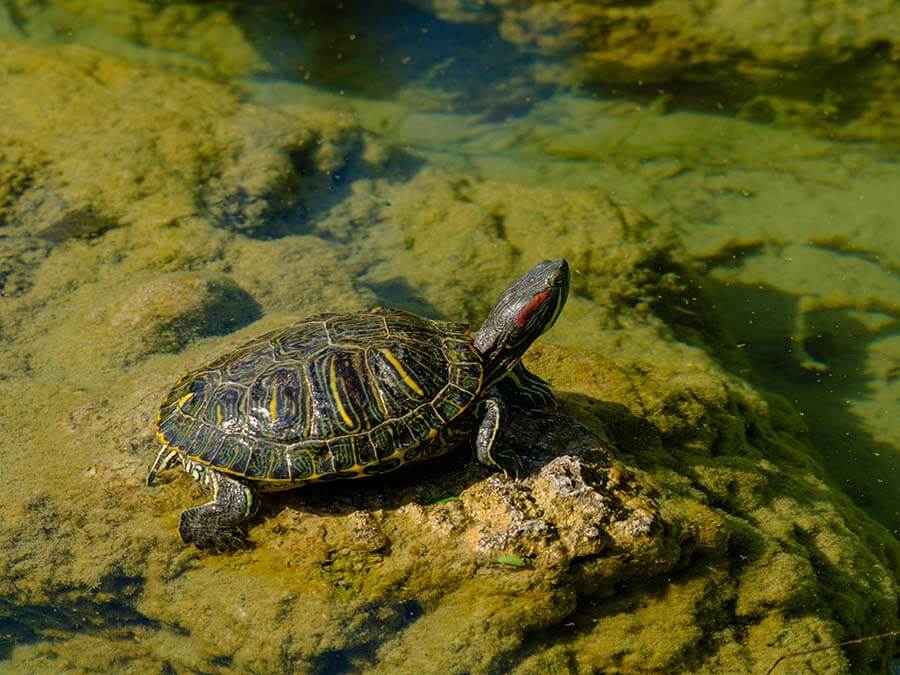Iguana Ownership Isn’t As Easy As It Looks
Iguanas have become increasingly popular among exotic pet lovers due to their prehistoric look, plant-based diet, and calm nature. However, what many new owners don’t realize is that iguanas are complex creatures with very specific care requirements. A small mistake can quickly lead to health problems, stress, or even early death.
This guide highlights the 10 most common mistakes that could seriously harm your iguana—so you can avoid them and raise a healthy, happy reptile.
1. Iguana Housing Mistakes Can Be Deadly
Many new iguana owners make the mistake of starting with a small enclosure, assuming the pet will “grow into” a larger one later. However, iguanas require a lot of space from the beginning. An adult iguana can reach 5–7 feet in length, including the tail.
Also, some owners forget vertical space. Iguanas are arboreal, meaning they love to climb. Without climbing branches or levels, your iguana may become stressed or lethargic.
Key Reminders:
- Minimum cage size: 6 ft high x 4 ft wide x 6 ft long
- Add branches, ramps, and hiding spots
- Avoid glass tanks—they trap heat and restrict airflow
2. Iguana Temperature Mistakes Impact Their Health
Temperature regulation is critical. Iguanas are cold-blooded reptiles, so they rely on external heat to digest food, fight infection, and stay active.
Still, many owners set up heat sources incorrectly, leading to either overheating or dangerous cold spots. A proper temperature gradient should be created—from a basking area to a cool zone.
Ideal Temperature Ranges:
- Basking spot: 95–100°F
- Ambient daytime: 80–85°F
- Nighttime: 75–80°F
Never use heat rocks. They can burn your iguana’s belly and cause severe injuries.
3. Iguana Without UVB Light Is at Risk
One of the most critical elements of iguana care is UVB lighting. Without UVB, your iguana can’t produce vitamin D3, which is essential for calcium absorption. A deficiency leads to Metabolic Bone Disease (MBD), which causes weak bones, tremors, and paralysis.
Lighting Tips:
- Use a reptile-specific UVB bulb, not regular light
- Replace the bulb every 6 months
- Position it no more than 12–18 inches from your iguana
- Provide 12–14 hours of UVB daily
4. Iguana Diet Mistakes Are Shockingly Common
Feeding an iguana the wrong food can lead to malnutrition, obesity, or organ failure. Some owners mistakenly feed them insects, meat, or high-oxalate veggies like spinach, which are toxic over time.
The best iguana diet is 100% plant-based, rich in calcium and low in phosphorus.
Safe Foods:
- Collard greens
- Mustard greens
- Dandelion leaves
- Squash
- Hibiscus flowers
Avoid iceberg lettuce—it offers no nutritional value.
5. Iguana Handing Mistakes Cause Stress
Many new owners are eager to handle their iguana frequently, believing it will help tame them. While regular interaction is important, improper handling can lead to stress, tail whips, and even aggression.
Iguanas don’t like being restrained or held tightly. They also have sharp claws and strong tails, which they will use in self-defense if they feel threatened.
Instead, allow your iguana to get used to your presence. Offer food by hand and talk softly to build trust. Let your iguana crawl onto you rather than being picked up. Handle sessions should be short at first—5 to 10 minutes is enough.
Also, never grab them by the tail. They can drop it in fear, and it may not regrow properly. Always support the body and legs from underneath.
Handling done right can build a calm and social iguana. But doing it wrong can create a pet that fears you—and that’s hard to reverse.
6. Iguana Hydration Neglect Is Dangerous
Some owners assume iguanas get all their moisture from food, but that’s a dangerous myth. Dehydration can lead to kidney issues and poor skin health.
How to Keep Your Iguana Hydrated:
- Provide a shallow water dish daily
- Mist the enclosure 1–2 times a day
- Offer water-rich veggies like cucumber occasionally
- Consider offering supervised soaks once a week
7. Iguana Enclosure Hygiene Is Often Overlooked
Cleanliness is essential for preventing infections and parasites. Yet, many owners forget to spot-clean or fully sanitize their iguana’s habitat. Dirty conditions lead to bacterial buildup and mold, putting your iguana at risk.
Cleaning Checklist:
- Spot-clean feces daily
- Change water and clean the dish every day
- Deep clean the tank weekly using reptile-safe disinfectants
- Replace substrate monthly
8. Iguana Mental Stimulation Is Ignored
An iguana may look calm, but without mental stimulation, it can become bored or depressed. Boredom leads to pacing, loss of appetite, or aggression.
Enrich their habitat with:
- Climbing ropes and platforms
- Natural branches
- New hiding spots
- Outdoor sun time (supervised)
You can also rotate décor and rearrange items weekly to simulate a fresh environment.
9. Iguana Juvenile vs Adult Care Isn’t the Same
One mistake owners make is caring for a baby iguana the same way they would an adult. But juveniles require more heat, softer greens, and smaller, more frequent meals.
Also, juvenile iguanas are more fragile and prone to stress. Give them more hiding spaces and avoid over-handling. Their metabolism is faster too, so they may need food twice daily.
10. Ignoring Iguana Vet Visits Can Be Fatal
Sadly, many people never take their iguana to a vet until it’s too late. Reptiles are masters at hiding illness, so symptoms often appear when it’s already serious.
Vet Tips:
- Find a reptile-savvy vet early
- Get a health check once a year
- Watch for signs like lethargy, poor appetite, or abnormal feces
Final Words: Iguana Care Requires Knowledge and Patience
Avoiding these 10 common iguana mistakes is essential for raising a thriving, long-living pet. Iguanas are incredible companions, but they demand the right setup, diet, and attention to detail.
With the correct knowledge and consistent care, your iguana can live up to 15–20 years and grow into a majestic, social creature you’ll love for life.









